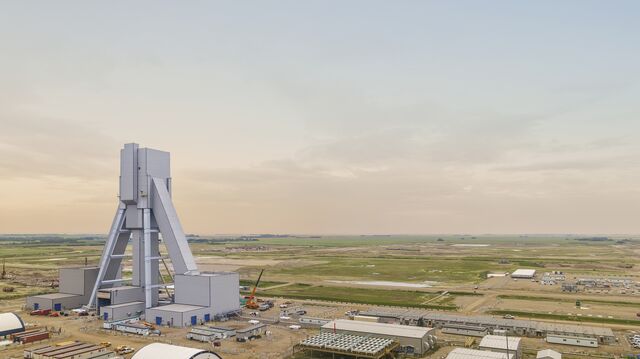BHP speeds up Jansen project in Saskatchewan despite falling potash prices

BHP (NYSE: BHP; LSE: BHP; ASX: BHP), the world’s largest miner by market valuation, is increasing its capital spending this year on the Jansen potash project in Saskatchewan by 55% even as potash prices dropped by more than a third this year.
Construction outlays at the site 180 km north of Regina are planned to rise to $1 billion from $647 million as crews work to start the mine in late 2026 instead of in 2027 as earlier planned, the company’s Calgary-based potash unit said. Jansen’s $5.7 billion stage one is 26% complete and would produce 4.4 million tonnes a year when finished, it said.
“There is no change to the overall capital estimate for Jansen stage one,” chief financial officer David Lamont told an earnings call on Aug. 22. “We have pulled that project forward around about nine months, so therefore the capital spend is over a shorter period of time, and that has some impact into the guidance that we’ve given.”
Melbourne-based BHP is developing potash production in Canada, the world’s largest producer of the fertilizer ingredient, as markets flex to restrictions of imports from top-five producers Russia and Belarus as well as Ukraine because of the war there. However, Belarus has been increasing potash exports recently despite sanctions for its role as a Russia ally, lowering prices.
Potash has dropped from a record spot price of more than $800 a tonne in November to about $340 per tonne in July. This month, Saskatchewan-based Nutrien (TSX: NTR; NYSE: NTR), the world’s largest potash producer and a failed takeover target for BHP in 2010, cited market conditions as it indefinitely postponed plans to increase annual potash output capacity to 18 million tonnes. It produced 13 million tonnes last year.
Long-term view
BHP says its potash outlook is measured in decades not years, although there could be lingering impacts from the Russian invasion of Ukraine. Potash demand is expected to increase by as much as 3% annually in the years ahead, BHP says.
“Longer-term, we see potash as a future-facing commodity with attractive fundamentals,” Huw McKay, vice-president of market analysis and economics, said in a commodity outlook presented last week. “Demand for potash stands to benefit from the intersection of global mega–trends: rising population, changing diets and the need for the sustainable intensification of agriculture.”
Jansen, being considered in four phases, would produce 17 million tonnes a year at its height as the world’s largest underground potash mine and the first new operation of its kind in Saskatchewan in 30 years. Global annual potash consumption was about 45 million tonnes in 2021, according to the US Geological Society. Worldwide production was 72 million tonnes that year, according to the government of Canada.
BHP is working on a feasibility study for phase two to be completed this fiscal year, which ends June 30, 2024, before making a go-ahead decision. BHP said it will spend about $125 million on the expansion’s pre-commitment work this year. First production from the second stage is estimated to be as early as late fiscal 2029.
“What we are really looking at to trigger Jansen phase two is strong underlying fundamental economics around capex and projected returns on that timeframe,” BHP CEO Mike Henry said on the Aug. 22 earnings call. “The second aspect is continued execution of Jansen stage one in line with plan or better than plan, and that is what we are seeing.”
War’s impact
The company is also considering how the war in eastern Europe impacts the medium- and longer-term output of Russia, Belarus and Ukraine, and may allow BHP to replace lost global supply.
“Market opportunity may indeed be stronger or opening up earlier than was originally anticipated,” Henry said. “There is no decision yet. The study continues, but we do want to position the company with the option to take an earlier [approval] decision in the coming year.”
This year, Canada’s federal government granted C$100 million to the Jansen project to help it develop the mine as a low-carbon emitter. In March, BHP awarded C$260 million in contracts to local Indigenous suppliers, bringing to a total of C$470 million of business to that community since the company approved stage one two years ago.
BHP was able to insulate Jansen’s first stage capital costs from inflation by adopting cost-saving measures it learned from developing several iron ore projects at the same time, such as integrating service providers and fine-tuning commercial strategies, Henry said. The company may act similarly if it approves stage two, he said.
“There may be a further opportunity for us to navigate an inflationary environment by being able to roll the skilled labour and contractors from one project into another, but that’s a subject of a further [approval] decision in the year ahead.”
More News
{{ commodity.name }}
{{ post.title }}
{{ post.date }}


Comments